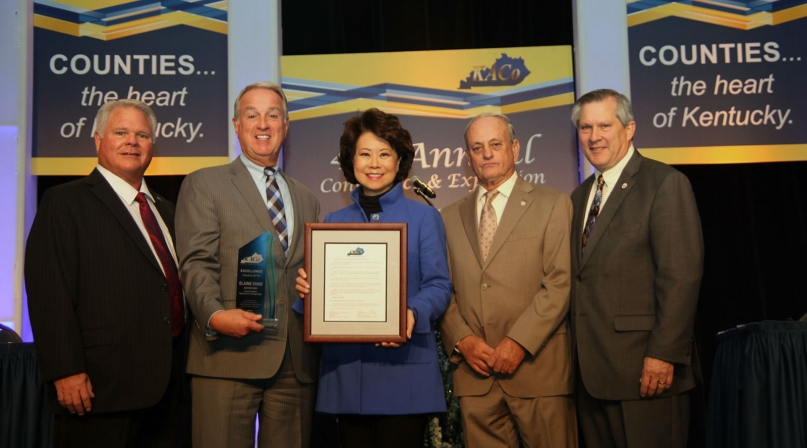Chao touts TIFIA loans for financing rural infrastructure needs
Upcoming Events
Related News

Key Takeaways
County officials in rural areas should take full advantage of a government program specifically designed to address unique infrastructure requirements in rural communities.
That was the message from Transportation Secretary Elaine Chao, speaking last month to members of the Kentucky Association of Counties’ at ts 44th Annual Conference.
Learn More
Chao said the administration has launched an initiative to expand access to a federal loan program and is committed to meeting the needs of rural infrastructure. She specifically highlighted a federal loan program, geared toward rural infrastructure projects, that has been historically underutilized in rural communities.
She encouraged audience members to apply for funding from the Transportation Infrastructure Finance and Innovation Act Loan Program, better known as TIFIA, in order to tap into federal funding sources that can be used to address special infrastructure needs found in rural areas.
While TIFIA has both rural and non-rural funding components, it is specifically designed to bolster rural infrastructure projects, the Secretary explained, as these projects can be eligible at $10 million, as opposed to the $50 million threshold requirement for non-rural projects. Other benefits of financing rural infrastructure projects through TIFIA include subsidized interest rates, coverage of certain fees and loans at a higher percentage of project cost.
“Rural America has a disproportionately high rate of traffic accidents and fatalities,” she noted. “This new initiative will provide yet another resource from the department to address the long-neglected needs of rural America,” she said. “It’s a matter of fairness and equity.”
Any type of project that is eligible for federal assistance through existing surface transportation programs (highway projects and transit capital projects) is eligible for the TIFIA credit program, including intelligent transportation systems. In addition, the following types of projects are eligible:
- International bridges and tunnels
- Intercity passenger bus and rail facilities and vehicles
- Publicly owned freight rail facilities
- Private facilities providing public benefit for highway users
- Intermodal freight transfer facilities
- Projects that provide access to such facilities
- Service improvements on or adjacent to the National Highway System, and
- Projects located within the boundary of a port terminal under certain conditions.

Attachments
Related News

U.S. House of Representatives passes SPEED Act and other permitting reform bills
On December 18, the U.S. House of Representatives passed the SPEED Act (H.R. 4776). The SPEED Act would strengthen county involvement in decision-making and make needed commonsense reforms to the federal environmental review process.

Counties and Railroads: Shared Priorities for the Next Surface Transportation Bill
County leaders from across the country have a vital opportunity to ensure their infrastructure priorities are front and center.

House lawmakers introduce bipartisan legislation to support World Cup local transportation needs
On December 2, U.S. Reps. Rick Larsen (D-Wash.-02) and Burgess Owens (R-Utah-04) introduced the Transportation Assistance for Olympic and World Cup Cities Act (H.R.6348), a bipartisan effort to strengthen local transportation systems in communities preparing to host major international sporting events